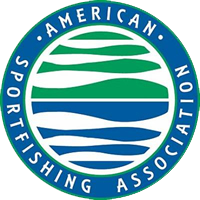
Famous author Stephen King once wrote that “Sooner or later, everything old is new again,” which applies to recent work in Alabama’s coastal waters. Obsolete structures once used for shoreline protection in Mobile Bay are being used to create new habitat for oysters, crustaceans and the bountiful inshore fish species that inhabit Alabama’s biodiverse estuaries and bays.
The Nature Conservancy teamed up with the Alabama Department of Conservation and Natural Resources (ADCNR), Mobile County, Dauphin Island Sea Lab, the University of South Alabama and Alabama Gulf Seafood to repurpose material from the shoreline protection project that was deployed in 2011 in Mobile Bay in the aftermath of the Deepwater Horizon oil spill. Funding from the American Recovery and Reinvestment Act was used by The Nature Conservancy, ADCNR and Mobile County to complete the project.
“It was three different types of reefs that we put in the water as an experiment to see what worked best to protect the shore, for the fish and for the oysters,” said Judy Haner, The Nature Conservancy’s Marine and Freshwater Programs Director for Alabama. “In the end, these particular cages took a beating from the waves. Even though they weren’t really protecting the shore anymore, they were still great fish habitat, and oysters were still on them.
“We knew they were ready to come out of the water because Mobile County is getting ready to build a breakwater system and backfill some mud to rebuild the shoreline starting this fall.”
The project involved removing the cages with a track hoe fitted with a grapple on a barge and transporting them to an open area at Bayou La Batre’s City Docks. The Nature Conservancy staff, partners and volunteers assembled to disassemble the cages. Oysters were collected and sorted to be returned to known oyster reefs near Bayou La Batre.
“We thought this was going to take us two days because we’ve never done this before,” Haner said. “We had no idea. We asked folks to show up at 8 o’clock. They showed up at 7. We got rolling and, before we knew it, we got the project done in half a day instead of the two days we thought. Many hands make for little work.”
[adguru zoneid=”3067″]
The next phase of the project involved using the same equipment and barges to collect the Reefballs that were deployed in the same areas as the cages and reuse them in the construction and enhancement of inshore artificial reefs under construction by the ADCNR’s Marine Resources Division (MRD).
“Those are concrete dome habitats that were also part of this project,” Haner said. “Those are covered in mussels and oysters, and they have been repurposed and used on an artificial fishing reef that ADCNR created near Dog River. We’re really excited about that. That’s a full-on repurposing of the entire material to benefit the fishers.”
Craig Newton, MRD’s Artificial Reef Coordinator, explained how part of the material that was removed during the recent work in Mobile Bay was used in the construction of the Dog River Reef, one of four new reefs in Mobile Bay.
“The new reefs are all 10 acres in size,” Newton said. “One is about a half-mile south of the Dog River channel. The Dog River Reef has 3- to 6-inch limestone aggregate in the interior 7 acres of the reef site. Then around the perimeter of the reef site, we’re going to place these repurposed Reefballs that were pulled out of the water. Then we have the Wellhead Reef and the Ghost Rig Reef sites. Those are on the western side of the bay. We’re going to have 3- to 6-inch limestone aggregate on those as well. The fourth new reef site is the Bon Secour Reef, which has the same material and metrics as the other new reefs.
“In addition to the four new reefs we’re constructing, the Alabama Wildlife Federation (AWF) purchased another $250,000 worth of rocks, and those are going to go to the Boykin Reef and the Bender-Austal Reef to enhance those for a little more oyster productivity.”
Newton said that productivity for oyster and fish habitat on the new reefs could begin fairly quickly after the construction is finished. He said oyster spat (oyster larvae) that float through the inshore waters could start attaching to those reef structures soon.
“We very well could get some spat set on those new reefs this spring,” he said. “I feel like we’re getting the rocks in the water at the appropriate time for the spring spat set to settle on them. Give it about a year of oyster growth and these reefs will begin to reach their peak potential.”
Numerous inshore fish species gravitate to the inshore fishing reefs, including speckled trout (spotted seatrout), red drum (redfish), white trout, flounder and sheepshead. To build the reefs, MRD uses limestone aggregate, repurposed concrete, oyster half-shells and low-relief concrete modules to create habitat for oysters, hook mussels and barnacles. As the reef biodiversity increases, it provides shelter for a variety of juvenile fish and bait fish, which attracts the game fish species targeted by Alabama’s inshore anglers. Visit www.outdooralabama.com/artificial-reefs/inshore-reef-zones for a map of inshore reefs and more information.
“In addition to these new reefs providing substrate for oysters, habitat for fin fishes and improving water quality, these reefs are also designed to help facilitate connectivity of isolated oyster reefs throughout Mobile Bay,” Newton said. “Even if these reefs aren’t specifically designed for direct oyster harvest, these artificial reefs will also help the natural oyster reefs around Cedar Point by increasing probability of successful larval oyster recruitment in areas that are routinely worked by oyster catchers. Anytime we find partners to repurpose some of these materials, like these Reefballs or repurposed concrete from construction sites, we try our best to make the best use of those secondary materials because they do provide excellent substrate for oysters and the biological communities that are associated with thriving oyster reefs.
“Also, I do expect those reef sites will be productive for spotted seatrout this summer, particularly the Wellhead and Ghost Rig reefs. They’re in a little deeper water, so as the spotted seatrout are seeking deep-water structure during the heat of the summer – that’s when people usually start slip-corking around the deep-water structure – they should produce good catches of spotted seatrout. I feel like there will be some nice trout coming off those reefs this summer.”
Haner said the recent work in coastal waters is only part of what The Nature Conservancy is doing in Alabama.
“We have a lot of other things going on around the (Mobile) Bay, but upstream in the rivers, we’re working with the Army Corps of Engineers to help build fish bypasses at the Miller’s Ferry and Claiborne dams to help with biodiversity on the Alabama river systems,” Haner said. “Also, we use a lot of prescribed fire to help manage the lands that we’ve purchased to preserve for the long term so that they’re really great recreational and hunting habitats to be used throughout the state. We’re excited about all the things going on from Huntsville all the way south.”
– DAVID RAINER, Alabama Department of Conservation and Natural Resources










